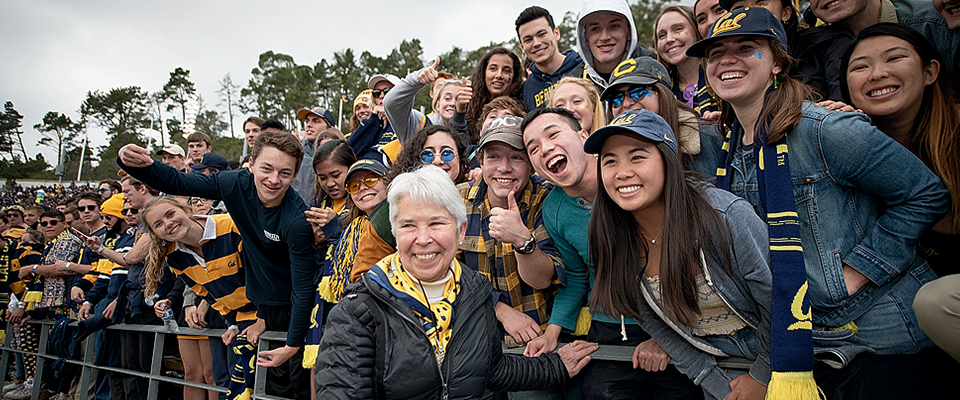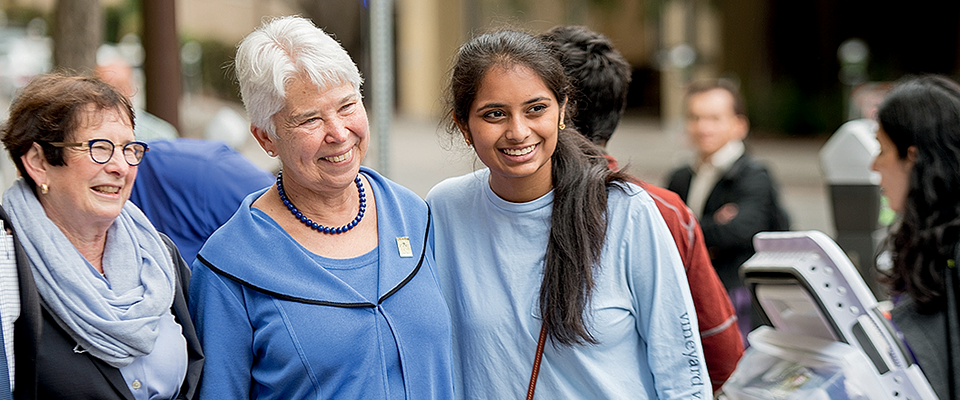Fiscal responsibility, seismic upgrades, and athletics
It was just over ten years ago that the State of California cut funding for higher education as part of a financial retrenchment in response to the Great Recession. Ensuing tuition increases helped to partially close the resulting budgetary gap, but the financial foundations of the campus were weakened and there were legitimate fears regarding our ability to sustain Berkeley’s excellence. In that context, I am delighted to announce to the Cal community that, as of June 30, 2019, our operating budget is balanced.
Three years ago, we had a structural deficit of $150 million. Through a combination of financial discipline, budget reductions, and new revenues, we have been able to bring the budget into balance and develop a new, more resilient financial model for the campus. Maintaining our budgetary well-being will depend on continued discipline and, even more importantly, the continued multiplication and diversification of sources of revenue, particularly those over which we have direct control.
A colleague of mine once said, “You can’t cut your way to heaven, but you can spend your way to hell.” Given reduced support from the state and resistance to tuition increases, our financial model must depend on new revenue streams. We are concentrating on six new revenue streams: non-degree enrollment (Berkeley Extension, Summer Sessions, and executive education); self-supporting master’s programs (professional master’s degrees that are priced to market and do not receive state support); monetization of intellectual property; monetization of real estate; increased contract and grant activity; and, of course, philanthropy.
Yet, even as our financial foundations have been strengthened, significant challenges remain. Rosemarie Rae, our chief financial officer, has often remarked that she was confident that she could solve Berkeley’s operating budget problem, but that she could not solve its capital budget problem. For more than a decade, the state has been moving away from general obligation bonds as a way of financing capital expenditures in higher education; this policy made the UC campuses more dependent on assuming long-term debt for capital expenditures, a reliance that proved to be a major cause of Berkeley’s budget deficit. The capital challenges that the Berkeley campus faces are immense. We have over $2 billion in deferred maintenance and an urgent need to modernize our science and engineering facilities.
Furthermore, we are now in the midst of a comprehensive seismic assessment of all of our buildings, and the preliminary results, based on new scientific and engineering knowledge, are sobering. Buildings are rated on a scale of 1 to 7, with 7 being the worst. Fortunately, we have no buildings rated 7, but we have 7 buildings rated 6 (very poor), and more than 60 rated 5 (poor). We must now begin the complex work of planning and sequencing the replacement or seismic remediation of these 67 vulnerable buildings. Since we have no vacant buildings into which we can decant the occupants of buildings that need seismic remediation, we need to build on an empty site, and then develop the complex choreography that follows. I think of this as a giant game of chess or a giant Rubik’s Cube. Although there is a bond measure on the ballot in March 2020 that will, if passed, provide some funding for the seismic work we must conduct, it will only cover a fraction of costs that will be well in excess of $1 billion, according to our current estimates. I am grateful we can confront this challenge from a position of relative financial strength.
I will end with a few words about the athletics budget. I believe that our Intercollegiate Athletics program has great value for the Berkeley campus. It provides our student-athletes with opportunities to compete at the highest level of their sport and develop qualities of leadership and character that will serve them extraordinarily well in their chosen professions. Intercollegiate Athletics also provides us with invaluable opportunities to come together, to strengthen the ties that bind us to the campus, and to feel and celebrate our identity as members of the Cal community. For 25 years, Intercollegiate Athletics has run a “deficit” ranging from $10 to $25 million. I put the word deficit in quotes because, on paper, Athletics has been allotted a campus contribution of $5 million despite the fact that year after year the central campus has absorbed the difference between Athletics’ revenues and expenses. The campus was thus supporting Athletics at a much higher level than $5 million, but representing it as a deficit.
I hardly need to say this was not a good way to budget. The incentives were all wrong and this annual practice erroneously and unfairly conveyed the sense that what is actually an efficiently and effectively managed department did not know how to handle its resources. Intercollegiate Athletics Director Jim Knowlton and I have spent the past year developing a budget agreement that recognizes what Cal Athletics actually costs, and we have set revenue and fundraising targets that will increase over the next six years until we reach a campus contribution level of $13.3 million. That level of support is, in my estimation, both sustainable and fully commensurate with the value Cal Athletics brings to the campus and its community.
All of the budget work that we have done over the past two years has depended on the efforts, the discipline, and the creativity of hundreds of people across the campus. We can all take satisfaction in how much stronger it has made our university.




















